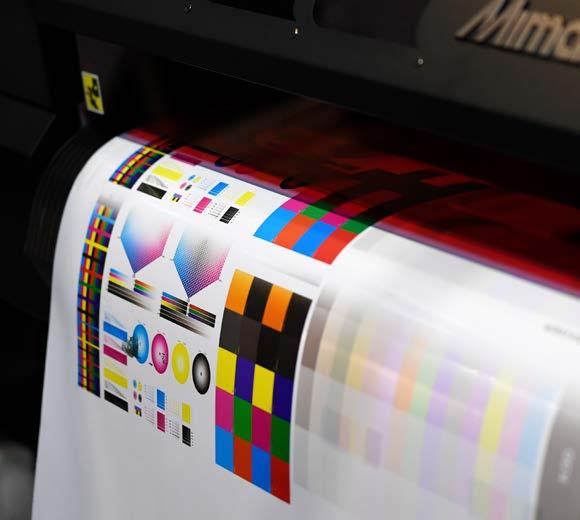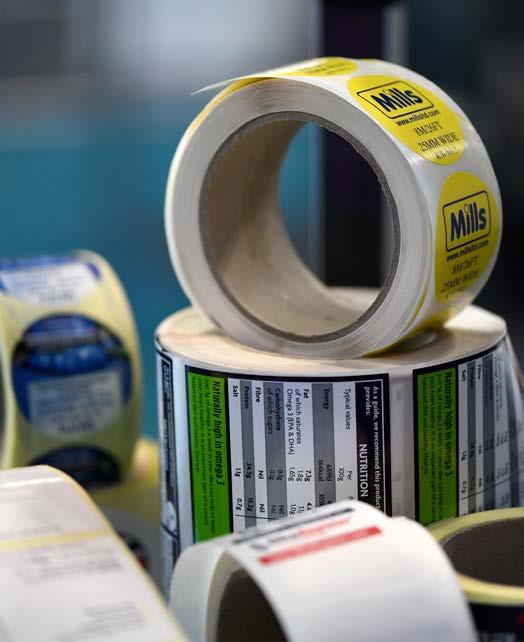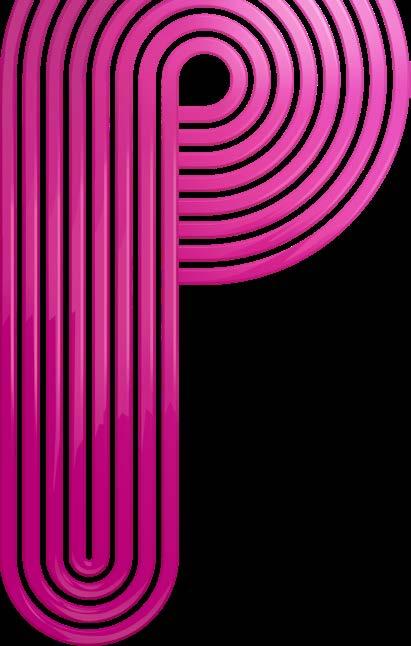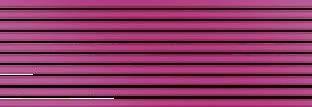
10 minute read
Keeping packaging flexible and sustainable
By Neel Madsen, Freelance Journalist and Copywriter
Flexible packaging is a growing market with a huge amount of R&D effort going into engineering solutions that are fit for purpose and meet sustainability targets.
Advertisement
Flexible packaging in its many forms is all around us. In the food and drinks sector, it serves a vital role in protecting the contents against contamination, keeping it safe during transport and prolonging the shelf life of the product, which in turn reduces waste. Printed packaging also serves as the link between the brand, the retailer and the end consumer by giving information and conveying messages.
Shelf appeal, be it in-store or virtually, has become even more important during the COVID-19 pandemic. With consumers limiting the number of trips to the supermarket or doing most of their shopping online, brands are looking at a vastly reduced opportunity to catch their attention. Furthermore, supply chains are being disrupted and brands can no longer safely rely on packaging manufactured abroad, so many more have turned to local UK suppliers.
In terms of sustainability, the production of flexible packaging requires fewer resources compared to traditional packaging such as rigid plastics, metal or glass. It is also lighter and takes up much less space in transit, in storage and even when filled and on the shelf. These all result in fewer lorries on the road and less energy needed for warehousing. As well as environmental benefits, this also reduces the overall costs. POUCH PERFECT Many brands have successfully moved products into printed stand-up pouches, and this development is set to continue due to the many benefits of this particular type of flexible packaging.
From a branding perspective, there is a much larger and clearly visible area available for decoration. The entire surface can be printed and will be standing up facing the consumer in-store, so there is ample scope to convey the brand message creating that all important shelf standout and impulse to buy allimportant ‘Moment of Truth’.
LIGHTWEIGHT REFILLS Pouches are also increasingly used for refills. “From gin to screen wash, the refill pouch market will grow enormously due to the cumulative benefits of lightweight flexible packaging formats. Robust in transit, eliminating ‘fresh air’ shipping or disposal before or after filling, combined with more readily available recycling systems make a genuine argument for overall carbon reduction,” claims Managing Director of Shrink Pack Ltd, Alan Lewis, who specialises in packaging machinery solutions.
A recent example of a brand choosing pouches as part of its sustainability strategy comes from P&G. The beauty division is using refill pouches in its quest to reduce plastics for the Head & Shoulders, Pantene, Herbal Essences and Aussie brands in Europe. The new system combines a reusable 100% aluminium bottle with recyclable refill pouches, made using 60% less plastic compared to standard bottles.
DIGITAL TREND Innovation in printing and converting technology is supporting growth. Digital printing inherently offers many advantages for brands, with much faster time to market than conventional methods, very low minimum orders and no plate costs. With digital, each single print can be different and changes to the design can be made instantly.

For small brands, digitally printed pouches offer an easier route to market with an end result that looks as professional as their much bigger competitors. One start-up brand taking advantage of digital print is Mamamade, which moved its vegan baby food from clear pouches with hand-applied labels into fully printed pouches. To achieve this leap, the team worked with ePac UK, whose business model is centred around HP Indigo digital technology. “Launching these new professional looking pouches has taken us to the next level,” says owner Sophie Baron.
For big brands, digital offers increased agility and is often used for customisation and personalisation campaigns or for testing variant SKUs.
The sustainability benefits of digital includes the elimination of redundant stock when the design changes or SKUs are discontinued, so there are no big warehouses to run as the packaging is produced almost on demand.
It is important to note that flexo printing still retains the largest share of the market by far due to capacity, speed and low unit cost. Today’s flexo technology offers very high quality, good enough to rival offset litho, and it is vastly cheaper than digital on longer runs but does require printing plates so there is less flexibility. Reduction of waste in the process – in materials, inks, energy and time – achieved by more automation on wide web flexo presses is making shorter runs more cost-effective and sustainable.
NEW OPPORTUNITIES Short-run flexible packaging produced on narrow to medium web presses offers label printers an opportunity to diversify and add more strings to their bow. The profit margin on labels is decreasing and the competition is fierce with up towards 500 label printing companies registered in the UK, so there is a need to find new markets and develop profitable niches. From a customer perspective, ordering several types of packaging from one supplier streamlines their process and saves on time.
Over the past couple of years, we have seen this result in the launch of new business units from the likes of Baker Labels with its new BakPac division and CS Pouches from CS Labels, while Hine Labels launched houp.com – all leveraging digital print to diversify, but there are also many printers producing flexible packaging on their narrow web flexo presses, albeit the runs are longer.
All images: Packaging Innovations at the NEC, Birmingham (2020)

“Our clients are looking to achieve professional packaging without the commitment of ordering larger volumes, and they are looking for multiple applications from the same provider,” said MD of Hine Labels, Bill Hine, who is using inkjet printing technology from Screen to produce both labels and pouches.
The recent backlash against plastic packaging has accelerated innovation in substrates with many new types being developed to meet the demand for sustainable flexible packaging solutions. The move away from very complex laminated structures promises better end of life for product packaging, while some paper-based substrates are being introduced.
National Flexible has introduced a new range of OPE/ PE pouches, which are made from a single polymer that can be recycled at supermarket recycling centres. These have been approved by all major retailers and were chosen by the Webbox cat food brand to replace pouches that were laminated with a metallised substrate, which is difficult to recycle. Meanwhile, start-up brand Nooro chose a compostable film from National Flexible for its range of CBD snack bars.
GREENER SUBSTRATES
Camvac is working with PlastoSac UK on a widely recyclable metallised barrier PE, for use in shelf-life applications where a gas barrier is required and where the products are sensitive to oxygen. Target sectors include snacks, particularly crisps, popcorn and nuts, and the coffee beverage market. Parkside Flexibles has recently expanded its Recoflex range, which can be widely recycled and is suitable for applications such as pouches and flow wraps. “Making flexible packaging suitable for the current recycling infrastructure in the UK is key to the sector moving forward.” Paula Birch, Global Sales Director.

Packaging Innovations & Empack 2021 17 & 18 June 2021 | NEC, Birmingham


The future of packaging isn’t what it used to be...

“This was my first Packaging Innovations conference and I was blown away by the volume of suppliers, quality and aesthetics of the stands, and overall energetic, passionate, positive vibe of those in attendance. The seminars were excellent. I enjoyed the VIP area too! Will definitely be back next year.”

Leisel Grimes, Creative Realisation, Pearlfisher


Get your badge free today www.packagingbirmingham.com
Sponsored Feature
ExtraPET recyclable barrier lidding film
By Camvac
Norfolk based Camvac was the first company in Europe to produce food contact grade metallised PET and OPP films. Today Camvac is one of the leading global suppliers of metallised and clear barrier films and laminates for a wide range of food packaging, liquid packaging (Bag-in-Box) solutions, medical applications, construction, and insulation products. Camvac’s metallised films and laminates can be found in a wide range of consumer end products and packaging, from lidding on ready meals to films within construction insulation. Camvac’s product range is constantly developing and evolving to meet the ever-changing needs of the consumer. Camvac has invested heavily into technological advances enabling sustainable packaging solutions to be available across most of its product portfolio, under its Camvert range.

Not all high barrier, sustainable film solutions are newcomers to Camvac’s Product Portfolio. Since its creation over twenty years ago, Camvac’s ExtraPET film has been widely acknowledged and recognised as a market leading product within the global lidding film sector. Its mono-material structure, exceedingly high barrier performance, both OTR and MVTR, critical for MAP/CAP packaging, together with high clarity and market leading antifog properties have been contributing factors to the film’s longevity and continued market success.
Extrapet is an all PET (mono-material) configuration, available in a range of structures with the two most common being 12micron Polyester laminated to 15micron Polyester and 12um PET to 25um PET. Barrier performance is gained by Camvac vacuum coating the material during manufacture with one of its ‘Cam’ processes. Camclear® was another Camvac first, introducing alox coated polyester film into the market as a chlorine-free clear barrier film, setting industry standards for gas barrier and clarity, which makes it unbeatable for a variety of applications. As a direct result of ExtraPET being an all polyester structure, the potential of total recyclability, where post-consumer collection infrastructure exist, is possible.
The transparent high barrier polyester laminate film is found in most UK supermarkets and has a growing presence globally, particularly in mainland Europe. Its versatility means the film is used for a wide range of processed meats, fresh meats, poultry, pastas, vegetable and bakery, where presentation and fresh appearance is critical. ExtraPET provides a variety of environmentally friendly solutions in peel and nonpeel, anti-fog and high barrier options.
The recyclable lidding film has the capability to seal and peel from various tray structures including PET trays. A PET tray and ExtraPET film lid combination meets the ever-growing requirement of a complete mono-material packaging solution that is truly recyclable.
Camvac is not willing to settle for a film which has been a market leader. Camvac’s in-house development team is working relentlessly to guarantee ExtraPET exceeds market demands and its reputation. Consumers are demanding greener and more sustainable options and with the imminent new plastic tax introduction, investment in new sustainable technologies has to become not only best practice, but affordable, while also representing a major plus to consumers growing ever more concerned about the recyclability of plastic film and laminate products they purchase.
This is no more evident than with the PCR (PostConsumer Recycled) base film ExtraPET solution. ExtraPET PCR is in the final development stages and will be commercially ready in Spring this year. Gary Chalkley, Development Director of Camvac, comments: “Consumers are demanding green solutions and even COVID-19 has not put a stop to Camvac’s development plans. Our ExtraPET 70% PCR lidding film is in the final development stages. After the final round of testing has been completed, Camvac will be able to accept commercial orders from new and existing customers alike. The PCR lidding film development comes directly from the Development Team’s hard work but also our Production Team’s eagerness to create an even more sustainable and environmentally friendly film to meet what the market is demanding.”
Camvac’s predominant customer base is and will continue to be the converter and packer. Recently the company has entered new markets, partnering with machine manufactures and tray producers. These new relationships are built upon the quality and reliability of Camvac’s ExtraPET film. As Camvac continues to invest and develop new packaging films, the company is continually seeking new opportunities to partner with like-minded companies and would welcome any opportunity to discuss new partnerships -not only for its ExtraPET films but also its other packaging solutions.
Camvac contact details Camvac Limited, Burrell Way, Thetford, Norfolk, IP24 3QY www.camvac.com | +44 (0)1842 755 021 info@camvaclimited.com
Fresh food that stays fresh
ExtraPET performance laminates provide a fully recyclable pack
• All PET (mono material) configuration • 12µ/15µ All Polyester Structure • 12µ/25µ All Polyester Structure
Benefits of ExtraPET • Environmentally friendly chlorine free • Excellent seal integrity • Peel / non-peel options • Anti-fog options • ExtraPET laminate is an all PET mono material allowing the potential for recyclability








